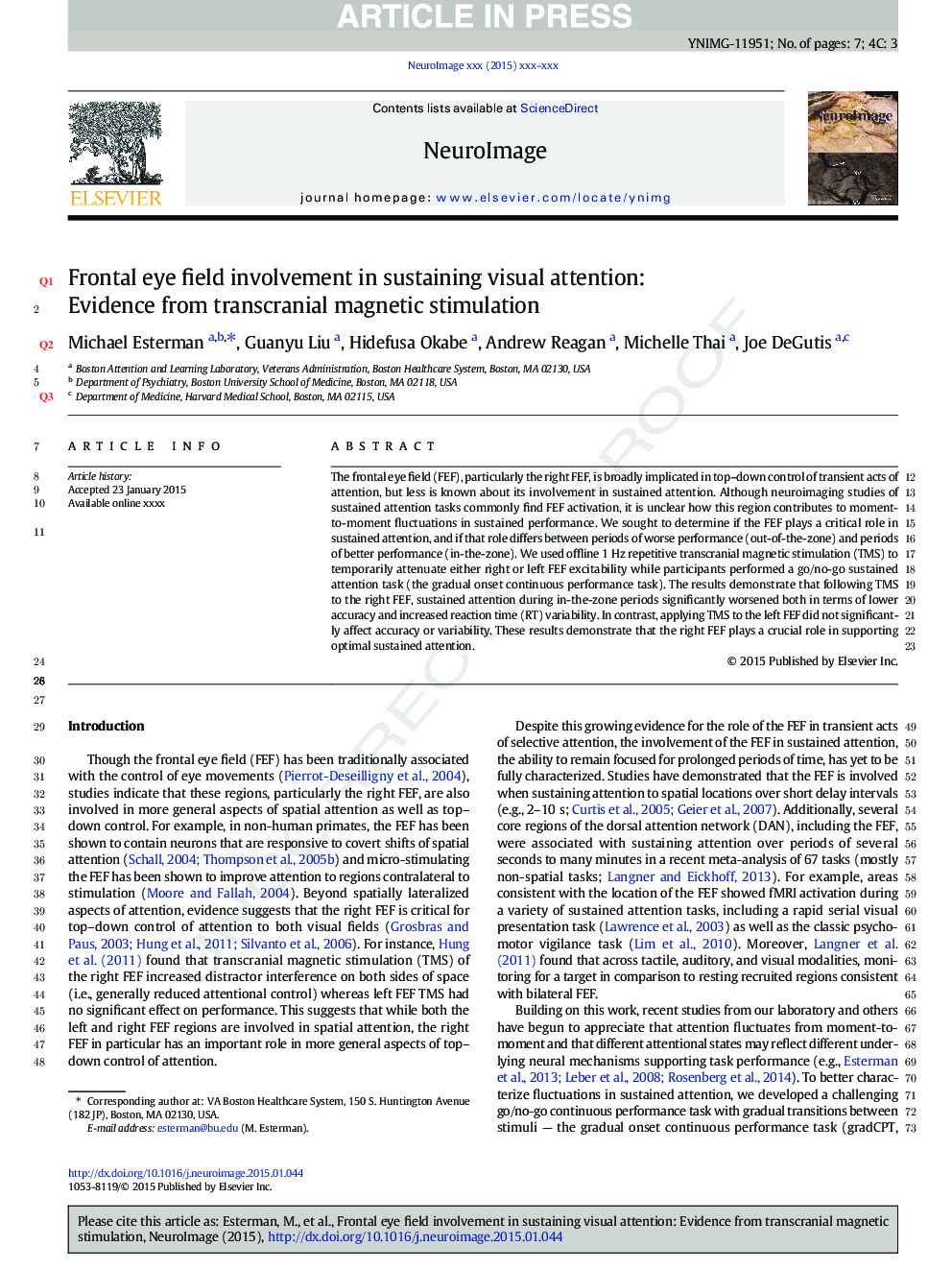| Article ID | Journal | Published Year | Pages | File Type |
|---|---|---|---|---|
| 6025511 | NeuroImage | 2015 | 7 Pages |
Abstract
The frontal eye field (FEF), particularly the right FEF, is broadly implicated in top-down control of transient acts of attention, but less is known about its involvement in sustained attention. Although neuroimaging studies of sustained attention tasks commonly find FEF activation, it is unclear how this region contributes to moment-to-moment fluctuations in sustained performance. We sought to determine if the FEF plays a critical role in sustained attention, and if that role differs between periods of worse performance (out-of-the-zone) and periods of better performance (in-the-zone). We used offline 1Â Hz repetitive transcranial magnetic stimulation (TMS) to temporarily attenuate either right or left FEF excitability while participants performed a go/no-go sustained attention task (the gradual onset continuous performance task). The results demonstrate that following TMS to the right FEF, sustained attention during in-the-zone periods significantly worsened both in terms of lower accuracy and increased reaction time variability. In contrast, applying TMS to the left FEF did not significantly affect accuracy or variability. These results demonstrate that the right FEF plays a crucial role in supporting optimal sustained attention.
Related Topics
Life Sciences
Neuroscience
Cognitive Neuroscience
Authors
Michael Esterman, Guanyu Liu, Hidefusa Okabe, Andrew Reagan, Michelle Thai, Joe DeGutis,
